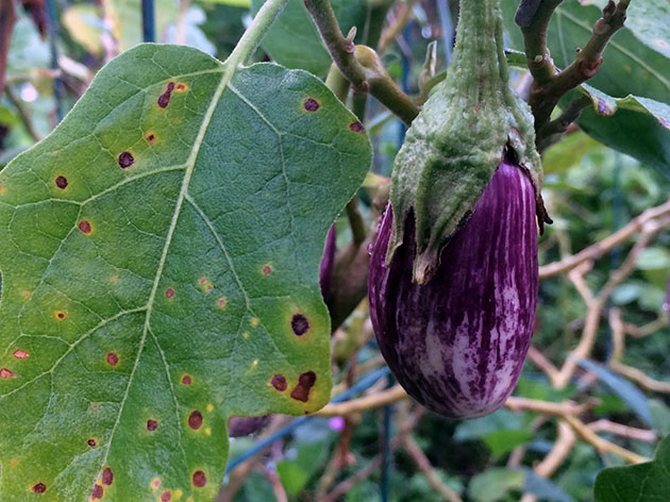
A sharp jump in temperature or an increase in the level of humidity will cause the development of bacterial spotting in eggplant. The causative agent feels great in open ground and inside the greenhouse. The catalyst for the process will be a temperature background at + 25 + 26С and a humidity level in the range of 85-90%.
Promptly taken measures will help prevent crop losses. The gardener must act quickly and correctly, so for starters you need to understand what triggered the development of the bacterial pathogen.
Content
Causes of the disease
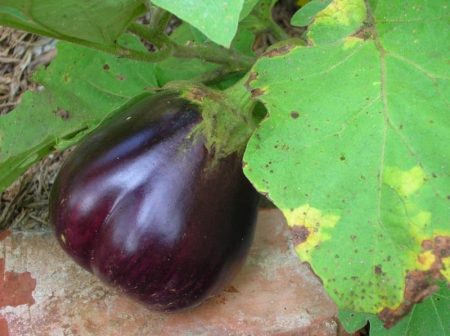
A variety of errors take first place among all the negative factors leading to the development of bacterial spotting. Botanists have identified the following list of reasons:
- lack of sunlight or artificial lighting;
- wrong watering mode;
- use for watering too cold water;
- lack of nutrients in the soil;
- wrong choice of type of feeding;
- too dense planting of nightshade crops in one area;
- not digging the soil after harvesting;
- the beds are dotted with plant debris;
- the presence in the adjacent area of the focus of the disease;
- work in the garden using non-disinfected garden supplies;
- performing manipulations with seedlings without the use of garden tools leads to micro-injuries through which the pathogen enters;
- use for sowing infected seeds.
The rate of development of the bacterial pathogen largely depends on the way it penetrates the site. From the moment of its transition to the active form, from several hours to several days pass.
A gardener who observes safety rules and regularly conducts preventive treatment of seedlings and soil is at a lesser risk. The causative agent has virtually no chance. Another terrible enemy of the bacteria is cold and heat.
Symptoms of the disease
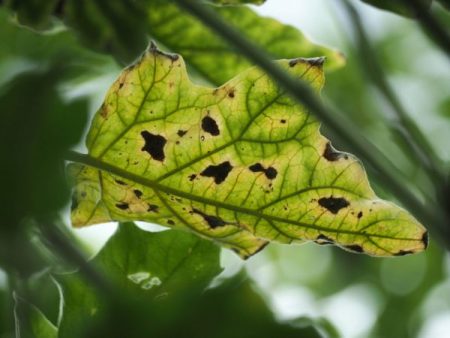
A bacterial disease does not have pronounced time periods when its appearance becomes more or less likely. Bacterial spotting can attack eggplant sowing at any stage of the growing season. Initially, the surface of the sheet is covered with many small black spots. They can be identified by a pronounced yellow border. When examining the stems and petioles, you can see a lot of oblong spots.
Within 7-9 days, they turn into convex points with watery edges. 1-2 weeks pass and patches affected by spotting are covered with multiple ulcers. Subsequently, the bacterial pathogen infects plant residues present in the garden and seeds.
Bacterial spotting treatment
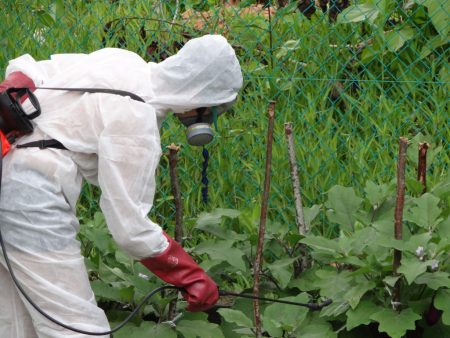
Botanists classify the disease as the most complex. Use of biologically active substances and pesticides is possible only at the initial stage. In other cases, even partially affected plants will have to be removed immediately with the seeds. All liquidated plantings must be burned, otherwise the eggplant cannot be re-infected.
The gardener, who noticed the disease at an early stage, has a chance by conservative methods to defeat him. The affected bush must be removed, and all the remaining ones are treated with the Fitoflavin-300 preparation. The procedure is as follows:
- take 20 ml of the substance;
- dissolve them in 10 l of water at room temperature - a prerequisite;
- recommended consumption rate - 2 liters per bush;
- spend 2 treatments with an interval of 14 days;
- after seedling treatment, the protective effect lasts for 20 days.
Immediately after making the drug, the gardener adds bacterial agents. The most common drugs include the following drugs:
- “Gamair” (1 liter for each bush) - take 1 tablet for every 10 liters of water;
- "Alirin" - 2 tablets for every 10 liters at a flow rate of 1 liter for each bush.
Both drugs are used no more than 2 times during the growing season. Exceeding the specified number of times is not recommended, otherwise seedlings can be injured.
Statistics show that recovered seedlings rarely provide a more or less good crop. It is not recommended to spend resources on treatment. The task of the gardener is to prevent the spread of the disease.
In the event that the disease manifests itself for 2 consecutive seasons, it is required to completely replace the soil used.
Preventive actions
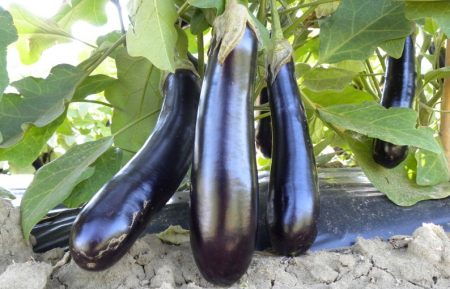
Sowing material should be taken only from healthy plants or purchased in a specialized store. Even in such a situation, mandatory preventive disinfection of seeds in a weak solution of potassium permanganate is carried out. The duration of the procedure is 20 minutes. The second practical recommendation is to observe crop rotation. It is impossible immediately after one nightshade culture to plant another in the garden. The list of precautions will continue with the following tips:
- regular removal of weeds and plant debris;
- providing seedlings in closed ground with an optimal temperature background;
- compliance with watering and fertilizing;
- Do not plant seedlings on the beds too tightly.
In a separate category of preventive measures, advice is given to use varieties that are resistant to many diseases. The list of such is as follows:
- mid-season grades: "Goliath", "Vikar";
- for greenhouses: “The Nutcracker”, “Purple Wonder”, “Baron”, “Bagheera”;
- early grades: "Amethyst", "Japanese dwarf";
- for open ground: "Orion", "Taste of mushrooms", "Orient Express";
- later varieties: “Torpedo” and “Mishutka”.
Black bacterial spotting is a bacterial disease that can be treated only at the initial stage. Unfortunately, even when seedlings can be saved, the gardener cannot expect a good harvest. The second problem - an ill bush becomes a carrier of the pathogen, so it is recommended to destroy it along with the seeds. To prevent the penetration of bacteria into open or closed ground, prevention, compliance with the rules of irrigation and fertilizing will help.

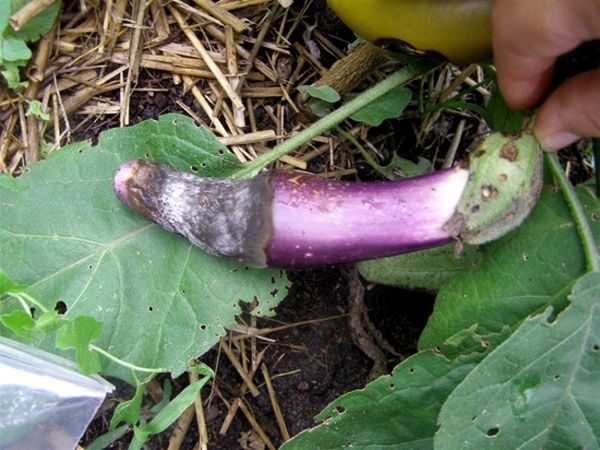
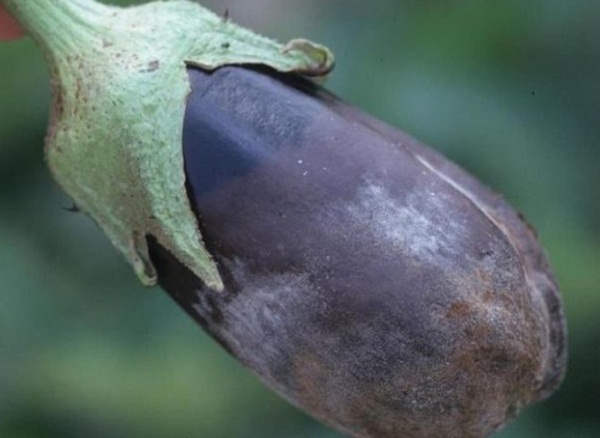
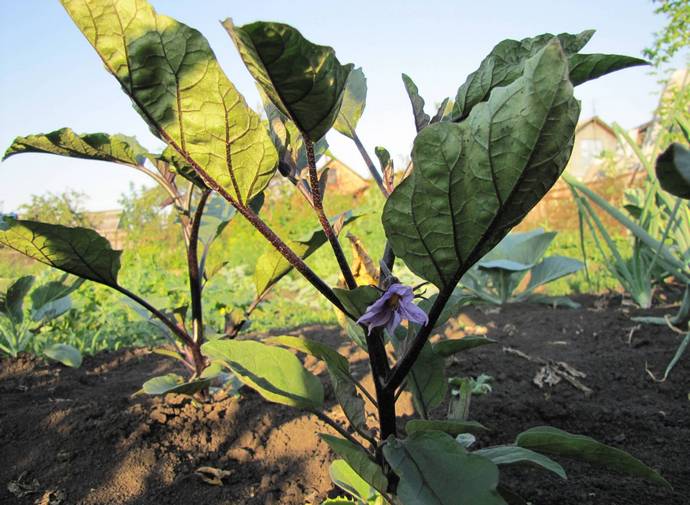 Eggplant have a empty flower? Save together with simple methods
Eggplant have a empty flower? Save together with simple methods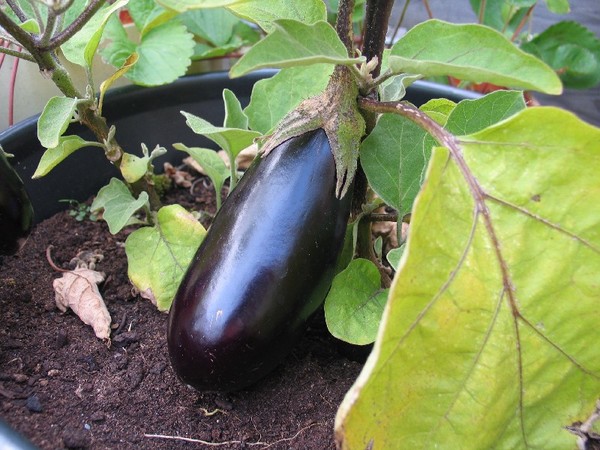 Why and what to do if the leaves turn yellow and wilt in the eggplant
Why and what to do if the leaves turn yellow and wilt in the eggplant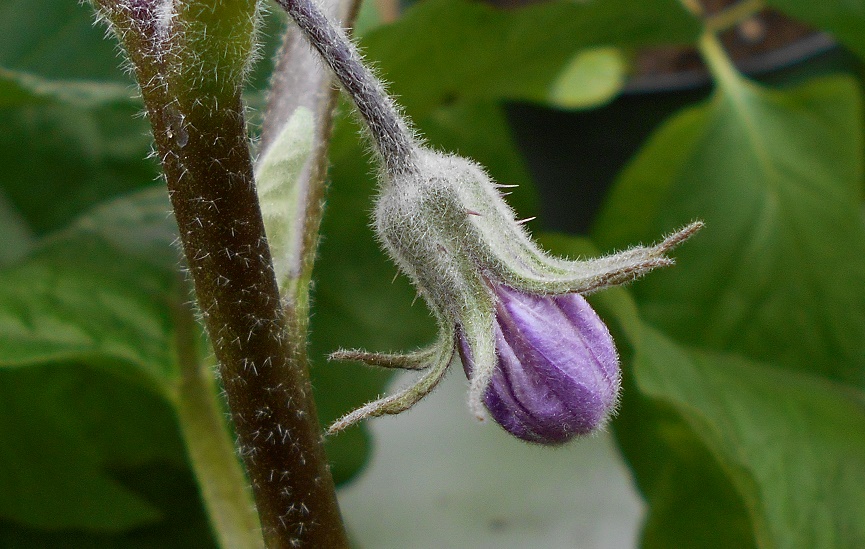 How to help eggplants to prevent flowers falling in the greenhouse?
How to help eggplants to prevent flowers falling in the greenhouse?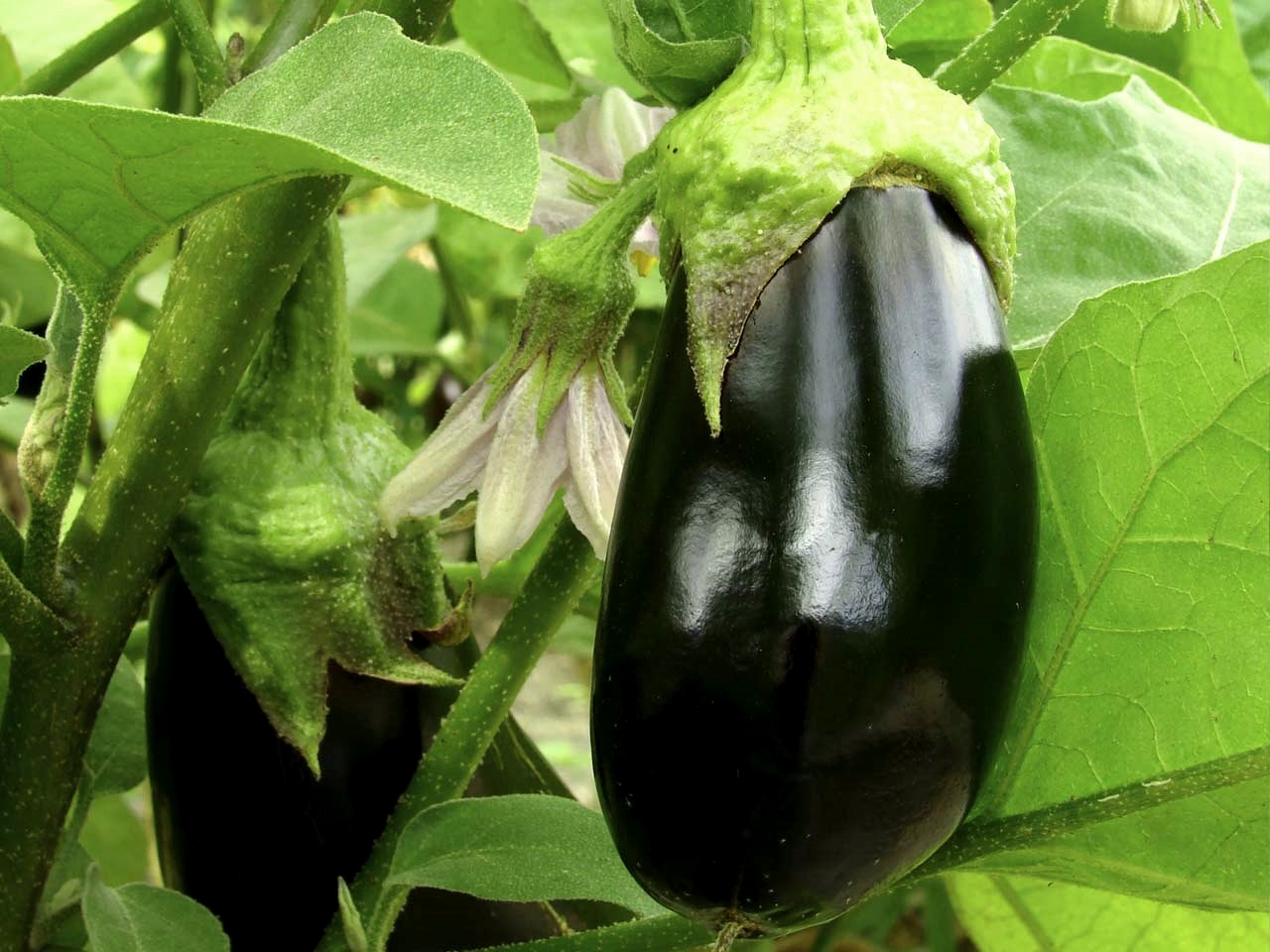 What to do to get a good eggplant crop in a greenhouse
What to do to get a good eggplant crop in a greenhouse